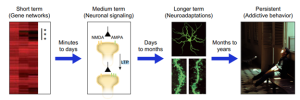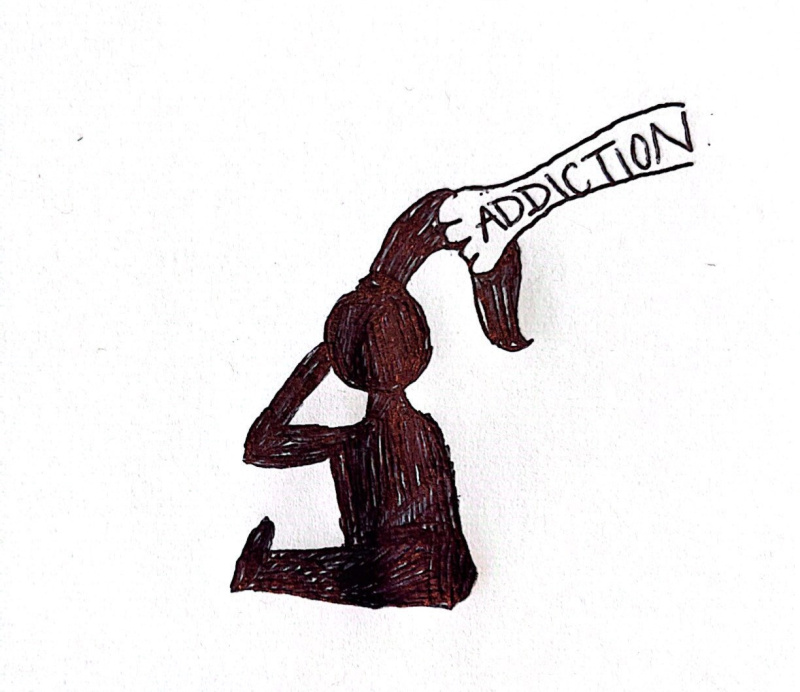Art abstract by Dhruvika Patel
What is Addiction?
The simplest definition of addiction: a relationship between a person and an activity they do or substance they take that they find themselves losing their self-control over. Most common addictions that seem to cause the most harm are different types of drugs and alcohol. This doesn’t mean that there are not natural addictions as well such as to sugar, exercise, eating, sex, etc. Drugs are, however, the most common and dangerous type of addiction found in the U.S with

overdose deaths affecting over 700,000 people in the US since 2000 (National Center for Drug Abuse Statistics). In either case, it is the pleasure that helps drive the need for our brains to keep that relationship strong.
What happens when you want to break up with addiction?
Withdrawal. It is not easy for one to break the relationship they have with a substance they are addicted to. An absence of the substance will cause the person to experience negative emotions as the stress neurotransmitters-CRF, norepinephrine, and dynorphin- in the amygdala begin to get activated. The lack of drugs in the brain can also drop dopamine levels, a major component of the reward system. These changes in the brain result in psychological, physical, and behavioral symptoms. Symptoms may include difficulty sleeping, irritability, mood changes, depression, cravings, tiredness, etc. These withdrawal symptoms are not very easy to live with, making the road to quitting an addiction a very difficult one to take.
Why so attached? LTP & LTD.
If these substances are so toxic, why are you so attached to them? What is one of the major aspects of your brain that keeps you so engaged in this toxic relationship? Long-term potentiation and depression. Long-term potentiation is commonly found in memory formation as your neurons learn and grow and permanently begin changing. That is fine with making new memories, but with addictions, it plays a major role in the formation of reward-related contextual memories. Long-term potentiation is a process involving persistent strengthening of synapses that leads to a long-lasting increase in signal transmission between neurons. Increased depolarization increases the activity of the post-synaptic neuron. To summarize how: post-synaptic activation leads to a calcium influx, and that calcium causes CaMK11 activation to bring AMPA receptors into the post-synaptic membrane. When there are more AMPA receptors inserted into the membrane, the receptor responsiveness increases. Therefore, LTP would cause sensitized behavioral responses.
On the other hand, long-term depression is just the opposite. Synaptic strength is decreased in long term depression as AMPA receptors get removed from the membrane through dephosphorylation. With the removal of these AMPA receptors, the cell becomes less responsive to glutamate. With the lack of receptors, it makes sense that responsiveness would become reduced; hence, the effects of tolerance are seen. It takes more of the drugs to cause the same feeling.

Both changes over time will begin creating very permanent changes in an individual’s brain, which is what makes addiction so difficult to reverse. When this synaptic plasticity changes, it creates long term problems with the brain having new expectations for the receptor activity set by their drug addiction. These long-term changes makes the relationship with drug abuse so difficult to break apart.

Sources:
- https://drugabusestatistics.org/
- https://jackwestin.com/resources/mcat-content/memory/changes-in-synaptic-connections-underlie-memory-and-learning
- doi:10.1152/physrev.00014.2018
